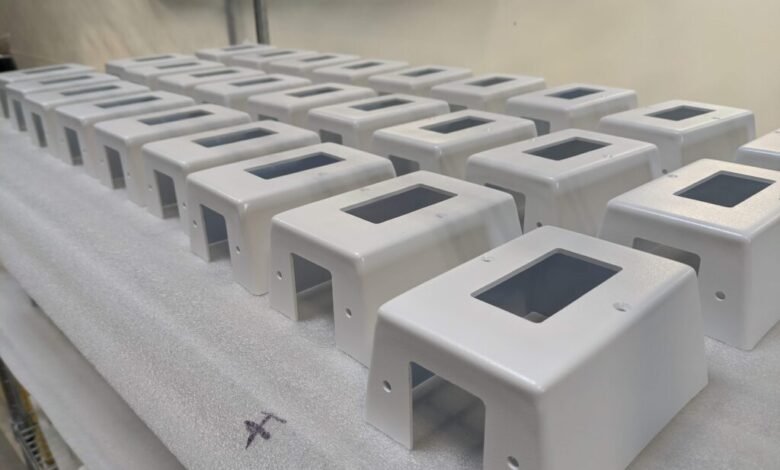Trends Shaping the Future of Thermoformed Vacuum Plastic Parts

Thermoformed vacuum plastic parts have long been an integral component of various industries, offering versatility, cost-effectiveness, and design flexibility. As technology continues to advance and market demands evolve, several trends are shaping the future of thermoformed vacuum plastic parts. This article explores these trends and their potential impact on the future of plastic part manufacturing.
Introduction
Thermoforming is a widely used manufacturing process abs vacuum forming that involves heating a thermoplastic sheet and forming it over a mold using vacuum pressure. This process is valued for its ability to produce complex parts with high precision and consistency. As industries undergo rapid changes driven by technological advancements and shifting consumer preferences, the future of thermoformed vacuum plastic parts is influenced by several key trends.
Trends Shaping the Future
1. Sustainability
In response to growing environmental concerns, there is a significant emphasis on sustainability in plastic manufacturing processes. Thermoforming machinery manufacturers are exploring ways to reduce energy consumption, minimize material waste, and utilize eco-friendly materials in the production of plastic parts. Biodegradable and recyclable plastics are gaining thermoforming company traction as viable alternatives, aligning with the industry’s commitment to sustainability.
2. Advanced Materials
The development of new thermoplastic materials with enhanced properties is driving innovation in thermoformed plastic part manufacturing. These materials offer improved strength, durability, and performance, expanding the range of applications for thermoformed parts. Additionally, materials with special properties such as conductivity, flame resistance, and antimicrobial properties are becoming increasingly important in industries such as electronics, automotive, and healthcare.
3. Digitalization and Automation
Digitalization and automation technologies are revolutionizing the thermoforming industry, improving efficiency, productivity, and quality. Advanced thermoforming machines are equipped with sensors, actuators, and control systems that enable real-time monitoring, predictive maintenance, and remote operation. This digital integration streamlines the production process, reduces downtime, and enhances overall equipment effectiveness (OEE).
4. Customization and Personalization
Consumers are increasingly seeking customized and personalized products tailored to their specific needs and preferences. Thermoforming allows for easy customization of plastic parts, making it well-suited to meet the demand for personalized products in various industries. Manufacturers are leveraging digital design tools and additive manufacturing techniques to create unique, one-of-a-kind parts that cater to individual tastes and requirements.
5. Additive Manufacturing Integration
The integration of additive manufacturing technologies, such as 3D printing, with thermoforming processes is opening up new possibilities in part design and production. Additive manufacturing enables the rapid prototyping of molds and tooling, reducing lead times and enabling manufacturers to iterate on designs more quickly. Additionally, hybrid manufacturing approaches that combine thermoforming with additive techniques offer increased flexibility and design freedom.
6. Industry 4.0 and Smart Manufacturing
Industry 4.0 principles, including connectivity, data analytics, and artificial intelligence (AI), are being adopted in thermoforming facilities to create smart manufacturing environments. These technologies enable real-time data collection, analysis, and optimization of production processes, leading to improved efficiency, quality, and responsiveness. Predictive maintenance algorithms and machine learning algorithms are used to anticipate equipment failures and optimize production schedules, reducing downtime and increasing productivity.
Future Implications
The convergence of these trends is reshaping the future of thermoformed vacuum plastic parts in profound ways:
- Increased Sustainability: The adoption of sustainable practices and materials will lead to reduced environmental impact and enhanced brand reputation.
- Greater Design Flexibility: Advanced materials and digital design tools will enable the creation of highly customized and innovative parts.
- Improved Efficiency: Automation, digitalization, and smart manufacturing technologies will drive efficiencies throughout the production process, resulting in cost savings and faster time-to-market.
- Expanded Applications: The combination of additive manufacturing and thermoforming will open up new applications and markets for plastic parts, fueling further growth and innovation in the industry.
Conclusion
The future of thermoformed vacuum plastic parts is characterized by sustainability, innovation, and digitalization. Manufacturers must embrace these trends and adapt their processes and technologies to remain competitive in a rapidly evolving market. By leveraging advanced materials, digital design tools, automation, and smart manufacturing principles, thermoforming companies can position themselves for success in the dynamic landscape of plastic part manufacturing.


